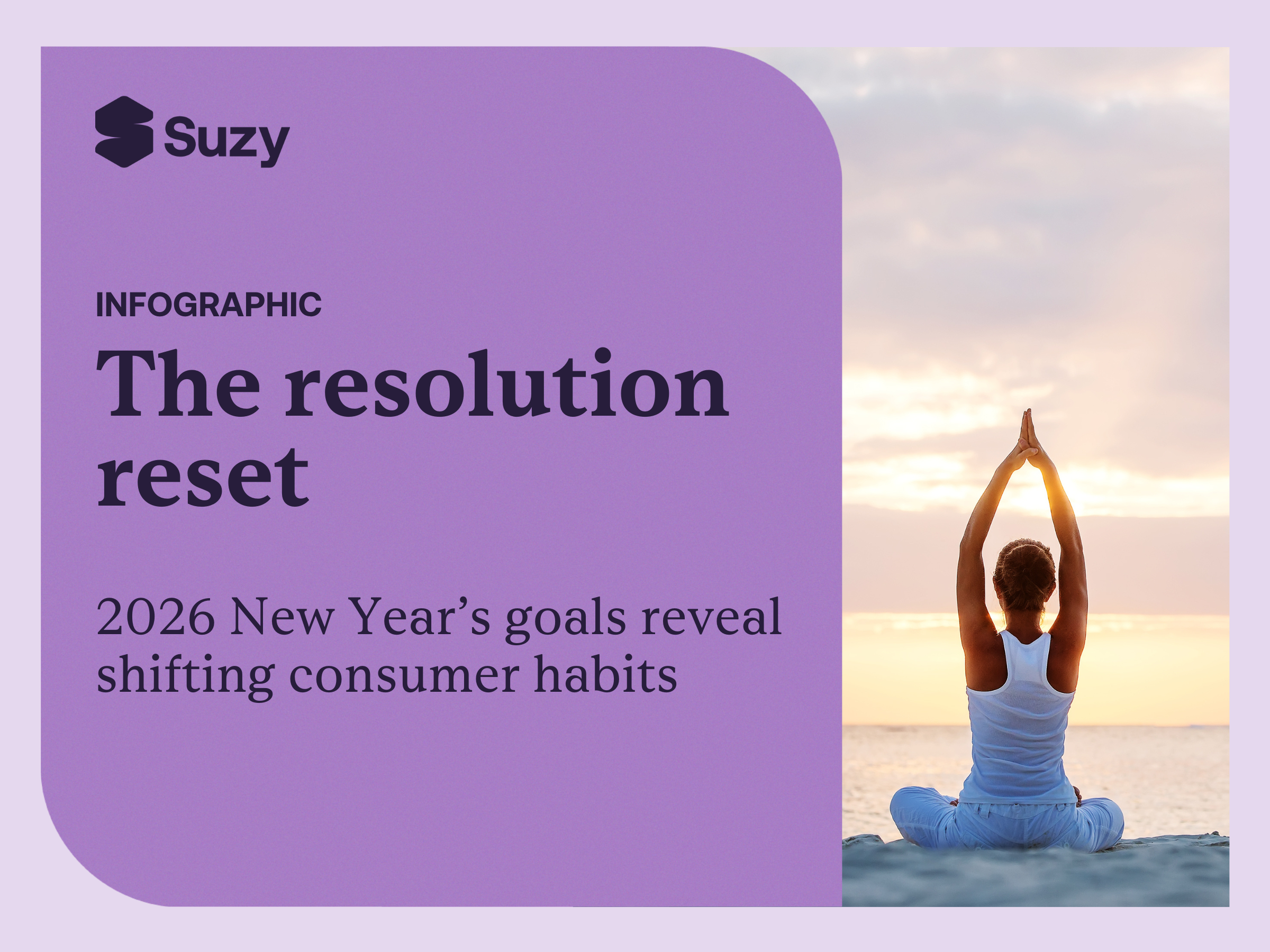Crafting an effective retail strategy and developing successful CPG products requires a deep understanding of the consumer through iterative research. Determining optimal pricing and packaging, identifying market trends, and finding the right flavors are critical for success and require regular and consistent consumer research.
In this article, let’s explore how one CPG brand, Freestyle Snacks, leveraged the Suzy consumer research platform’s iterative research and real-time data to inform its product line, make a splash with retailers, and launch products with success.
About Freestyle Snacks
First, a little about Freestyle Snacks. The brand created convenient, liquid-free packaging to house their high-quality, delicious marinated olives from Greece. “As I launched my products into the market, I wanted to really make sure that they were going to resonate with consumers,” said Founder and CEO, Nikki Seaman. On top of launching a new flavor—Mediterranean Herb Medley—Nikki was also looking to get her products on the shelves of a regional retail store.
Laying the groundwork for Freestyle Snacks’ retail strategy
As Nikki planned her retail strategy, she wanted to focus on growing her different SKUs, making sure the right claims were on pack, and ensuring her innovations would be a hit when they launched in-store. To do so, she needed to run a variety of different surveys using different methodologies.
That’s where Suzy’s iterative market research cloud came in. With Suzy, Nikki could zero in on what the olive lover consumer wanted to see in stores and what they would actually purchase. Starting with foundational research, Nikki worked to create an ideal customer profile.
“We are targeting the modern-day olive lover, but who really is that?” Nikki explained. “I didn't know, and so that's what I wanted to dig deeper on. And with Suzy's help, I was able to craft a really detailed survey to figure out different preferences of that olive lover. What type of packaging did they like to purchase their olives in? Where did they like to go on vacation? What are their favorite hobbies and activities, and I can use all of that information to better market and reach those consumers.”
Innovating through packaging design
With that foundational data in mind, she could move to the next stage of her retail strategy and begin the innovation process.
“As a food CPG brand, we're always thinking of innovations, what's coming next down the pipeline, but before using all of our resources to actually go after and commercialize an innovation, it's super important to have the research to underlie it that consumers are actually going to be excited and willing to purchase this new innovation,” Nikki explained.
With three SKUs already, Nikki wanted to develop a new one that her target consumer would be interested in. “We didn't know exactly which color or how to design the packaging best to really stand out on the shelf,” she explained. The new SKU also needed to fit within her current product lineup.
“So we ran a survey with Suzy testing all different types of colors to represent this Mediterranean Herb Medley. We had different packaging renders, from blues to turquoise. I think we even had an orange color in there and we really wanted to see what was going to resonate most with olive-loving consumers and what they were most compelled to actually purchase if they saw it in store.“
To understand what color to use, Nikki ran a monadic test. Consumers had to answer different questions based on just that one design that they saw. In the end, each respondent was presented with the design they had been providing feedback on, along with the other designs in consideration. They were then allowed to indicate their top choice among the five options and share their overall preference.
“This kind of two-pronged approach really helped to narrow in on specific characteristics about each of the packaging designs but then gave us kind of that overall high-level answer of this is the direction that would be best for Freestyle snacks to go in for the Mediterranean Herb Medley flavor,” Nikki said.
Getting on the shelf
With her target consumer in mind, and stellar packaging to boot, Nikki next had to make the pitches to retailers. To get data to share with a category buyer at a regional retailer that she was excited to pitch to, Nikki took a mixed-methods approach, running both qualitative and quantitative research.
Starting with quantitative research, Nikki wanted to first make sure that her target consumer actually shopped at the retailer. Nikki surveyed consumers to see if they had recently shopped at the retailer, and if they had also purchased olives at the retailer in the last three months. Once they had narrowed respondents down to consumers who met both criteria, Nikki then surveyed the respondents to see if they would buy Freestyle Snacks at that retailer.
Then, Nikkie tapped into qualitative methodologies with video open ends. “We were now able to layer onto that quantitative data with qualitative data. We had people who were excited and likely to purchase FreesStyle Snacks at the retailer create a video explaining exactly why they would be interested.”
What did Nikki find out? “People really loved the packaging. They loved the unique, innovative flavors. They loved that it was a liquid-free, easy snack. They talked about all of the different ways they would use the product. I was then able to use this data in a sizzle reel using Suzy's showreel tool and compiled all of the great videos that we got from consumers and then was able to share that video with the buyer. They were super impressed to see the level of depth and breadth of the amount of research that I put into this pitch,” Nikki said.
Why does iterative research work for retail strategies?
By building on top of all her research, starting with foundational all the way to shopper insights and using a variety of quantitative and qualitative methods, Nikki was able to build a retail strategy that resulted in a successful pitch to a retailer.
“Suzy offers a plethora of other methodologies that I've leveraged throughout the whole creation, product concepting, and launching process, as well as the in-store, shopper, and marketing side of things,” Nikki said. “So through their different types of methodologies, we've been able to concept new innovations. We've been able to do MaxDiff analysis to understand different flavor line extensions as well as what claims on our pack are resonating the most.”
With a data-informed retail strategy, Nikki felt confident going to market with her new flavor and won her pitch with the retailer.
“Suzy has truly transformed how we approach consumer research. The combination of the quantitative and qualitative research, as well as their really specific and perfectly on-point consumer retargeting, has really opened our eyes and allowed us to gain the deepest consumer insights,“ Nikki concluded.
Want to get started with your retail strategy project? Book a demo with our team today to see how iterative research works at Suzy.
.webp)
.avif)




.png)

